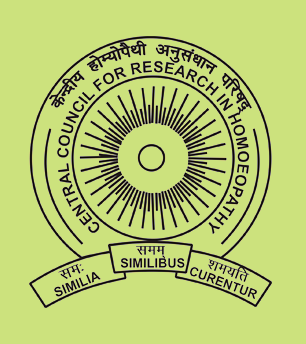Indian Journal of Research in Homoeopathy
Keywords
Double-blind randomised controlled trial, Greene climacteric scale, Homoeopathy, Menopause, Sepia, Utian quality of life scale
Article Type
Original Article
Abstract
Background: Based on the results of Central Council for Research in Homoeopathy's previous study, wherein Sepia was indicated and prescribed in maximum number of cases, this study was planned to further validate efficacyof Sepia in the management of menopausal symptoms. Objectives: The study was conducted with the objectives of evaluating the efficacy of homoeopathic medicine – Sepia in the management of menopausal symptoms using 'The Greene Climacteric Scale' (GCS) and the quality of life using Utian Quality of Life (UQOL) scale. Materials and Methods: A randomised double-blind placebo-controlled clinical study was conducted from April 2012 to September 2014 at four research centres of Central Council for Research in Homoeopathy. Perimenopausal cases were screened (n = 471), and those fulfilling the eligibility criteria (n = 88) were enrolled and randomised to receive either homoeopathic intervention, i.e., Sepia (n = 44) or identical placebo (n = 44) and followed up for 6 months to assess them on predefined clinical parameters. The primary outcome was the change in the menopausal complaints assessed using GCS and the secondary outcome measure was change in UQOL scale. Results: Eighty-eight patients were considered for primary outcome analysis. The primary outcome measure, i.e., total score of GCS, when compared after 6 months, was reduced from 30.23 ± 8.1 to 7.86 ± 4.6 in Sepia group (improvement of 73.9%) and from 30.05 ± 8.9 to 12.73 ± 8.3 in placebo group (improvement of 57.63%) (P = 0.001). There was a statistically significant difference between both the groups, when compared after 6 months (P = 0.001). With respect to secondary outcome, the total UQOL score was 59.09 ± 7.74 for Sepia group and 57.39 ± 7.80 for placebo group at baseline, and 62.43±7.71 for Sepia group and 63.48±7.53 for placebo group after treatment indicating slight difference in quality of life after 6 months. Conclusion: Sepia is able to allay the menopausal symptoms when prescribed on symptomatic indications as per homoeopathic principles.
Digital Object Identifier
10.4103/ijrh.ijrh_8_18
Publisher
Wolters Kluwer India Pvt. Ltd.
How to cite this article
Gupta J, Dimpi K, Lamba C, et al. Homoeopathic medicine – Sepia for the management of menopausal symptoms: A multicentric, randomised, double-blind placebo-controlled clinical trial. Indian J Res Homoeopathy 2019;13:219-228. doi: 10.4103/ijrh.ijrh_8_18



